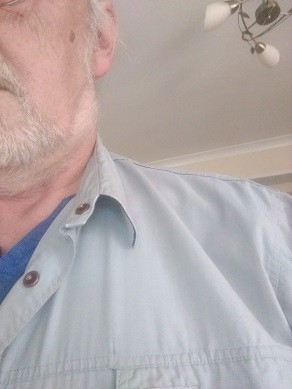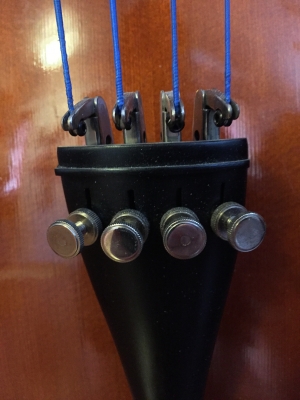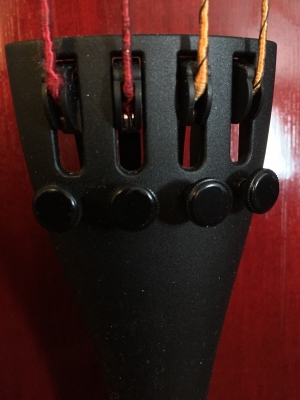Welcome to our forum. A Message To Our New and Prospective Members . Check out our Forum Rules. Lets keep this forum an enjoyable place to visit.
Currently working on errors from the latest (SimplePress) forum update. Many issues have been resoled and others are being worked on. Thank you for your patience.
 Topic RSS
Topic RSS



 (1 votes)
(1 votes) 










This is just a VERY BIG guess 🙂
I'm wondering if they serve a sort of similar purpose to the plastic "shields" you sometimes find on 3-pin electric plugs when you buy a new product (well, that's what often happens in the UK - don't know if you have the same there. Say you bought a toaster, nice shiny brushed-metal finish... the little plastic shield is for protective purposes to prevent, during storage and shipping, any cosmetic damage caused by the pins of the plug rubbing against the product.
So, my VERY BIG guess (having never fitted an individual cello string) is that perhaps, when slipped right down to the ball-end winding, it's just to limit any possible contact with the cello body during fitting - and then once fitted (you described them as foam), can be literally just torn-off ?????
Frankly, I'm really at a loss as well, my observation is clearly Quixotic - somewhat like tilting at windmills - I mean, like what's the point, they couldn't do any real damage, could they ??? Hahahahahaha I give up on this one as well !
OK - not given up yet.... Perhaps they are nothing to do with my guess above - here's another one - being foam rubber/plastic I can't see them having any noticeable dampening effect - BUT - is it possible they could be for placing above the nut, i.e. in the peg-box itself where the strings all get closer together - I imagine with strong vibration and "not-quite-cleanly-fitted/wound-on-peg-strings" you may get occasional buzzing sounds during fff playing? The little foam bits would just compress themselves between the strings in the peg box, limiting any potential inter-string contact within the box ??????
Go on, someone, more ideas !!!!
EDIT:
Subsequently found at https://www.aitchisoncellos.co.....-the-buzz/ - I may just be getting close to the answer !! - extract reads -
Scroll and peg box: You can normally detect a scroll buzz by putting your head close to the scroll. Loose decorative mountings on the head of the pegs can start to buzz, as can loose peg-hole bushings (the spiral or end grain wooden in-fill used to narrow an over-wide peg hole in the side of the peg box and which can come unglued over time.) Dirt in the peg box can vibrate and cause a buzz. If there are old worm tracks in a cello scroll, buzzing can emanate from this area due to loose dust inside the worm tunnels.
Each of the non-playing lengths of string (known as ‘after lengths’) in the peg box between the nut and the peg will have its own vibrations and if these after lengths pass too close to a peg or another string, they will buzz. In rare instances, the free end of the string sticking out beyond the hole in the peg can buzz.
It's still a guess though !!!! Good luck @Mouse 🙂 that's my ideas exhausted....
I seriously recommend not copying my mistakes. D'oh -
Please make your own, different mistakes, and help us all learn :-)











Regulars
 Offline
Offline

@Mouse , did you provide them with the photo of your installation? If I were reading their response as a section in an instruction manual, I would have placed the felt immediately after the ball end as I secured it to the fine tuner, thus compressing the felt on the fine tuner. In this position, no metallic sound from the ball would be possible and the felt would not dampen sound from the after length of the string.
No idea if I am right, but it has a logic.
Success is the progressive realisation of a worthy ideal. —Earl Nightingale.











Cool - I thought the things were just a kind of expanded-poly-foam ( I must have been only half awake when I read this at 3:30am this morning ! ) - but I see you refer to them as "felt" - I must have misunderstood/mis-read the post - felt's a lot harder wearing (and more solid) - and yes - I get the idea now - cool - thanks for the feedback ! 🙂
I seriously recommend not copying my mistakes. D'oh -
Please make your own, different mistakes, and help us all learn :-)
Regulars


This was interesting. I had at one point a violin set with the same kind of felt on one of the strings (pretty sure it was the A string, but I could be wrong.). I believe it was Eudoxa, which is a Pirastro make also. Kinda neat to know what it's for.
'Armed with theory, practice becomes meaningful. Through practice, theory becomes fulfilled.' - Egon von Neindorff.











@HP - well @Mouse and anyone worried about "buzzing noises" - LOL - I have to admit ( this all refers to a violin E string ) - on a specific string set, because of the color of the winding at the ball end, I hadn't noticed the little (same color as the winding) plastic sleeve intended for the bridge slot (which is parchment anyway, so no need)... it was there for WEEKS until it worked itself free from the end of the winding and I got this continual buzzzzz while playing (even on low strings, just the vibration causing it)
You know, some things, which should be obvious (unlike @Mouse 's little felt pads) just make one feel stupid !!!!!
And since I'm talking about "stoopid is as stoopid does" - well - here's another I fell in to - yes - it was the little metal button on my shirt - and only because I was playing sans-shoulder-rest - yeah - I was at the point of disassembling the damn fiddle when it struck me what was going on.... here's the little button-stud - I mean to SAY, just how stoopid ???? LOLOLOLOL

I seriously recommend not copying my mistakes. D'oh -
Please make your own, different mistakes, and help us all learn :-)
Regulars
 Offline
Offline


BillyG said
... well - here's another I fell in to - yes - it was the little metal button on my shirt - ... - yeah - I was at the point of disassembling the damn fiddle when it struck me what was going on.... here's the little button-stud -
I hear your pain, Billy! Love my long, dangly earrings ... couldn't, at first, figure out why my violin was clicking in addition to the usual squeaking. So I've decided to give cello a try. I don't have any earrings that long 🙂











Regulars
 Offline
Offline

@Mouse and others. I am finding a definite disconnect in German firms between engineering and marketing. Examples are the Wittner Isny, Fiedler cello bow clamp, and now these string end felts. The “clique” is in the know and every one else has no need to know.
Success is the progressive realisation of a worthy ideal. —Earl Nightingale.


 Log In
Log In Register
Register























